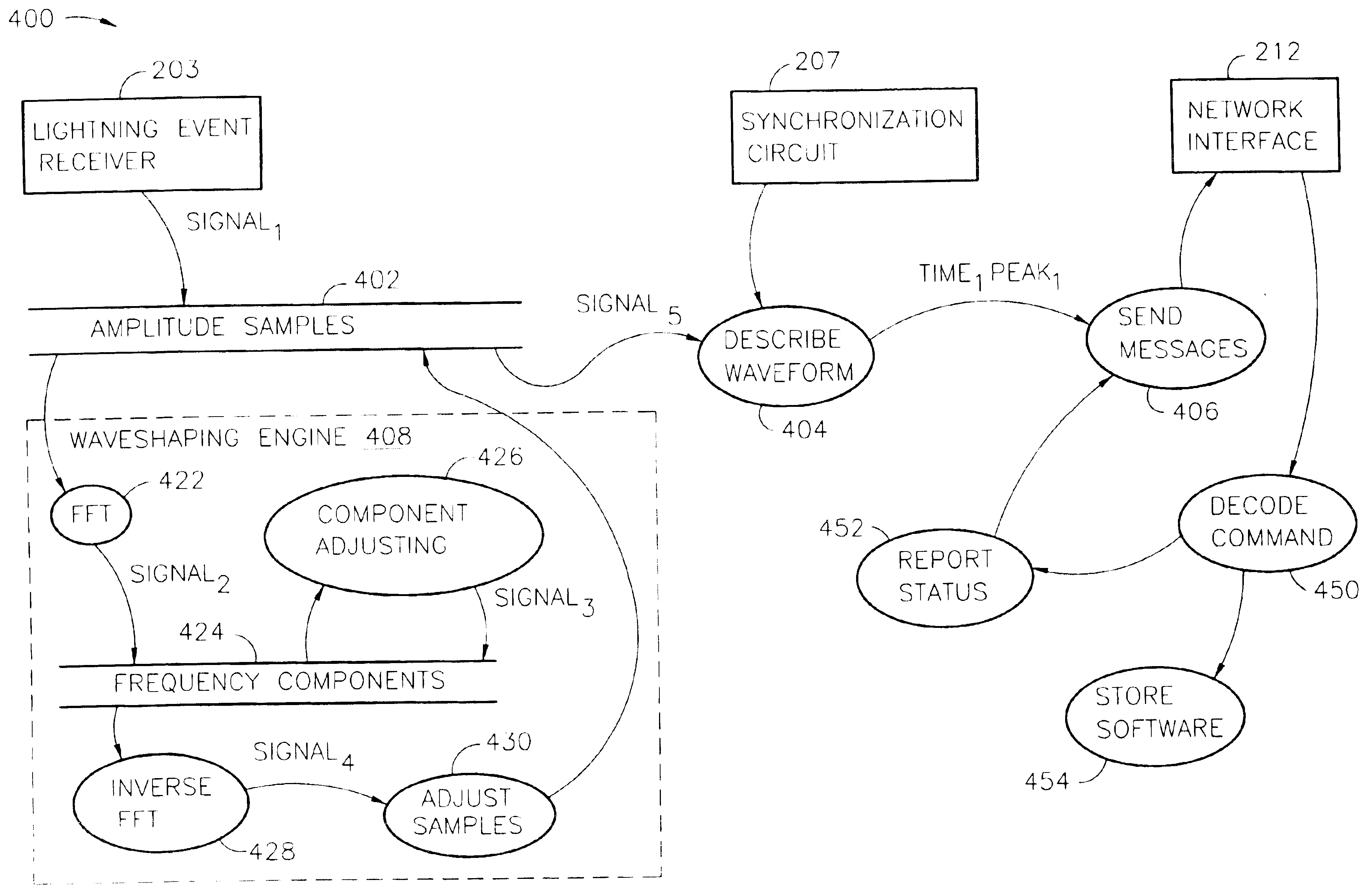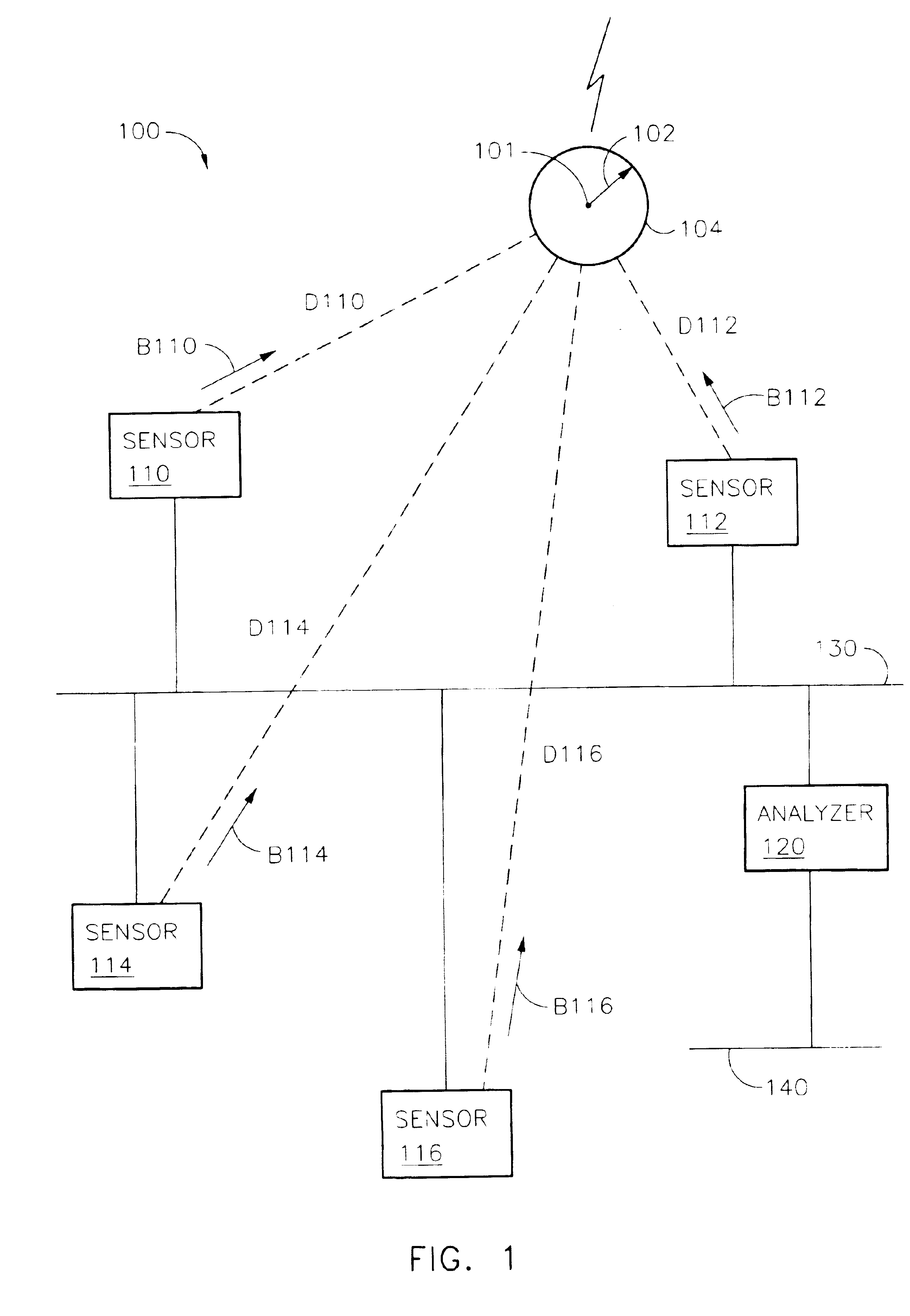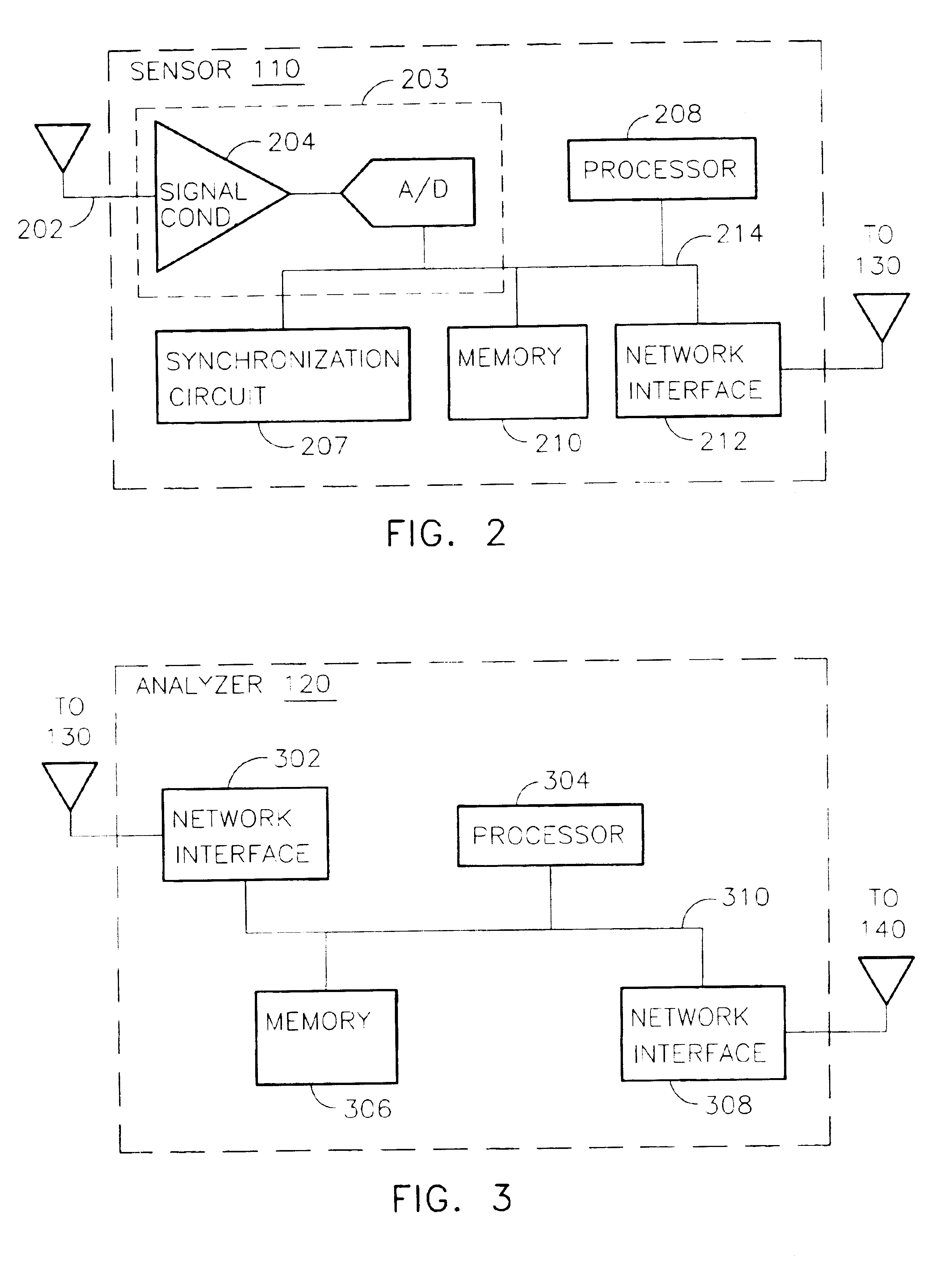Systems and methods for spectral corrected lightning detection
- Summary
- Abstract
- Description
- Claims
- Application Information
AI Technical Summary
Problems solved by technology
Method used
Image
Examples
Embodiment Construction
[0023]A lightning detection system, according to various aspects of the present invention estimates the location where each cloud to ground return stroke occurred at the ground. In alternate embodiments, the current of each return stroke is also estimated. Estimates are efficiently computed based on data collected by sensors which report to an analyzer. The analyzer receives sensor reports, computes estimated locations and currents, and reports (e.g., continuously) the occurrences of return strokes with estimates of respective location and current that are more accurate than conventional systems. Improved accuracy is due in part to using time corrections, amplitude corrections, and / or spectral corrections. Sensors may include a waveform engine. Time corrections and amplitude corrections are generally applied to reports from sensors without a waveform engine. Time corrections and amplitude corrections, according to various aspects of the present invention, account for terrain (e.g., ...
PUM
 Login to View More
Login to View More Abstract
Description
Claims
Application Information
 Login to View More
Login to View More - R&D
- Intellectual Property
- Life Sciences
- Materials
- Tech Scout
- Unparalleled Data Quality
- Higher Quality Content
- 60% Fewer Hallucinations
Browse by: Latest US Patents, China's latest patents, Technical Efficacy Thesaurus, Application Domain, Technology Topic, Popular Technical Reports.
© 2025 PatSnap. All rights reserved.Legal|Privacy policy|Modern Slavery Act Transparency Statement|Sitemap|About US| Contact US: help@patsnap.com



